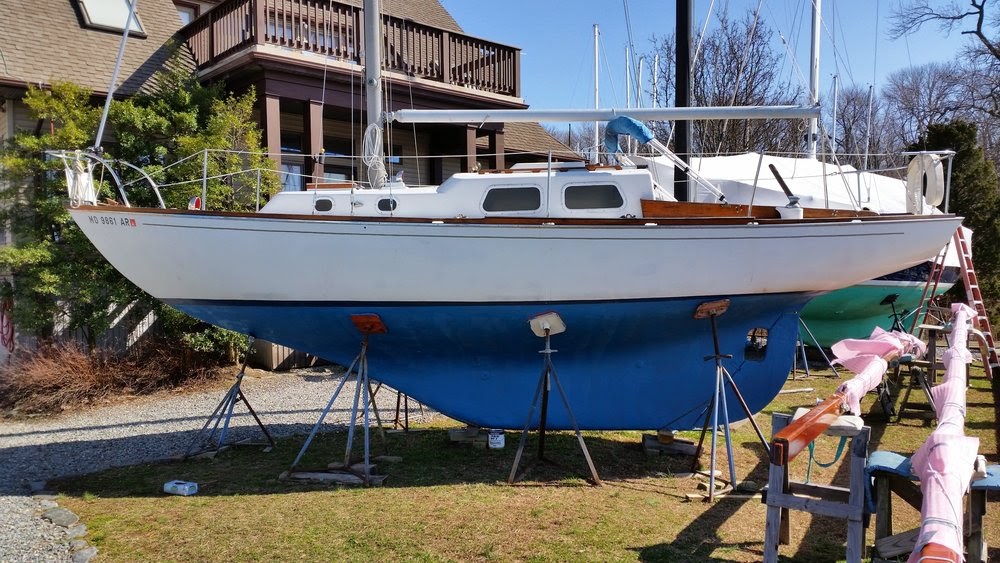First things first, the health of your boat’s hull is as important as other visible parts of a boat. When the vessel is stored in water, it is exposed to marine growth and other elements that
can lead to a fouled bottom. Antifouling paint as a boat bottom painting option is a proven preventative maintenance method to protect the hull and have a clean, safe boat.
Antifouling Paint
It is a paint type effective against various kinds of marine organisms – such as algae, weeds, mussels, slime, and barnacles. A fouled bottom can affect a boat’s performance on the water, which further leads to a costly repair. Different types of antifouling paints, which use the dissipation of metal as a toxic biocide, can help against biofouling and make a vessel remain safe, efficient for a long time.
However, choosing a suitable antifouling paint isn’t an easy job. Since there is formulation involved in the painting process, a boat owner needs to consider various things, including paint used in the past and how the vessel is being used. While getting boat bottom painting services from a company, a buyer should remember that softer paints can go over harder ones, but not vice-versa.
To make the process of buying the boat bottom painting easier, here are some questions to ask:
- Question 1: Is it Suitable for Aluminum Hull?
An antifouling paint that comes with cuprous oxide isn’t a suitable option for an aluminum hull. Its use leads to galvanic corrosion that may result in a damaged hull. Instead, use an aluminum boat bottom paint that contains a blend of a zinc compound and cuprous thiocyanate.
- Question 2: Are There Bright Colors?
A boat owner who wishes to have a dazzling vessel should go for bright colors, such as ones that contain white copper as a biocide. These antifouling paint formulations have at least 50% less copper than standard paints that come with dark cuprous oxide as a biocide. This helps in getting a brighter hull.
Also Read:- Beginner’s Guide to Buying The Right Scuba Diving Equipment
- Question 3: Does the Paint Contain Zinc as Biocide?
Buyers living in areas that restrict the use of copper as biocide should look for an antifouling paint that contains zinc as a biocide. For props and keel coolers, they may also look for products that do not contain any kind of biocide.
- Question 4: Does the Paint have an Anti-slime Additive?
In areas where the slime is a matter of concern, boat owners should ask for boat bottom or painting products that contain Irgarol as an additive to act against slime. The popular additive is known for controlling photosynthesis in plants and preventing a vessel against slime.
- Question 5: Is There an Antifouling Paint to Relaunch a Boat Without Painting After Winter?
If a boat owner wants to get his boat back into the water after winter without painting, then a copolymer ablative antifouling formulation becomes an ideal solution. It is known for protecting the hull by dispersing biocide at regular intervals.
- Question 6: How to use a Vinyl-based Paint?
Paints with vinyl-based formulations provide a long-term boat bottom painting solution, but they need to be applied in the right manner. It is necessary to remove the already-applied paint, unless it is a vinyl-based product.
- Question 7: What’s the Right Paint for Saltwater?
Paints that work the best in freshwater aren’t effective in saltwater. To buy the best boat paint for saltwater, a buyer should get something similar to Micron 66.
- Question 8: Which is the Best Product for frequently used Boats?
For boats used more often, a buyer should purchase a product that gets smoother with time. An ablative paint remains effective for a long time and protects a boat’s hull against various kinds of threats.
- Question 9: Is There a Paint for Boats Stored Out of Water?
A copolymer paint is the best product for boat owners who store their vessels out of water when they aren’t being used. The paint protects a boat in all kinds of weather conditions through its thickness.
- Question 10: How to Paint Over Old Paint?
It is essential not to apply paint over old paint, especially when the formulations aren’t matching or it’s a flaky paint. Remove it before applying the new one.
In Conclusion
Antifouling paints are useful products that can protect a boat against various kinds of oceanic threats. However, the best boat bottom painting product is the one that meets a vessel’s requirements and suits weather conditions.
